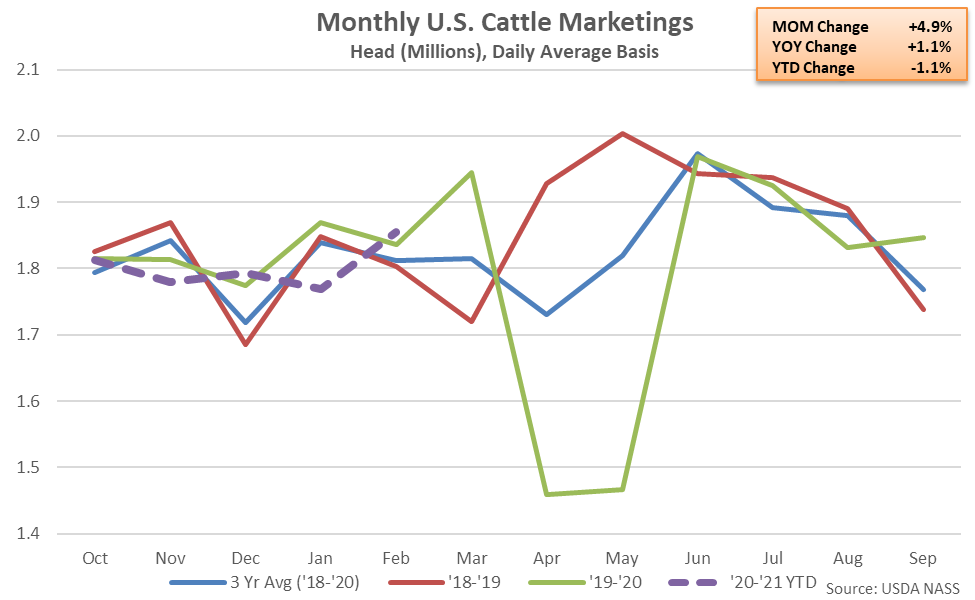U.S. Cattle on Feed Update – Mar ’21
Executive Summary
U.S. cattle on feed figures provided by the USDA were recently updated with values spanning through the end of Feb ’21. Highlights from the updated report include:
- U.S. cattle and calves on feed for the slaughter market as of Mar 1st increased 1.6% YOY, finishing higher for the eighth consecutive month and reaching a 15 year high seasonal level. The YOY increase in the cattle on feed supply was largely consistent with average analyst expectations.
- Placements in feedlots increased 1.9% on a YOY basis throughout Feb ’21, finishing higher on a YOY basis for the third consecutive month. The YOY increase in placements finished above analyst expectations.
- Marketings of fed cattle increased 1.1% on a YOY basis throughout Feb ’21, reaching a ten year high seasonal level. The YOY increase in marketings finished below analyst expectations.
Additional Report Details
According to the USDA, Mar 1st cattle and calves on feed for the slaughter market in the U.S. for feedlots with capacity of a thousand head or more declined seasonally from the previous month but remained 1.6% higher on a YOY basis, reaching a 15 year high seasonal level. The YOY increase in the cattle on feed supply was the eighth experienced in a row. The 1.6% YOY increase in the cattle on feed supply was largely consistent with average analyst expectations of a 1.4% increase. The month-over-month decline in the cattle on feed supply of 0.9% was larger than the ten year average February – March decline of 0.3%.
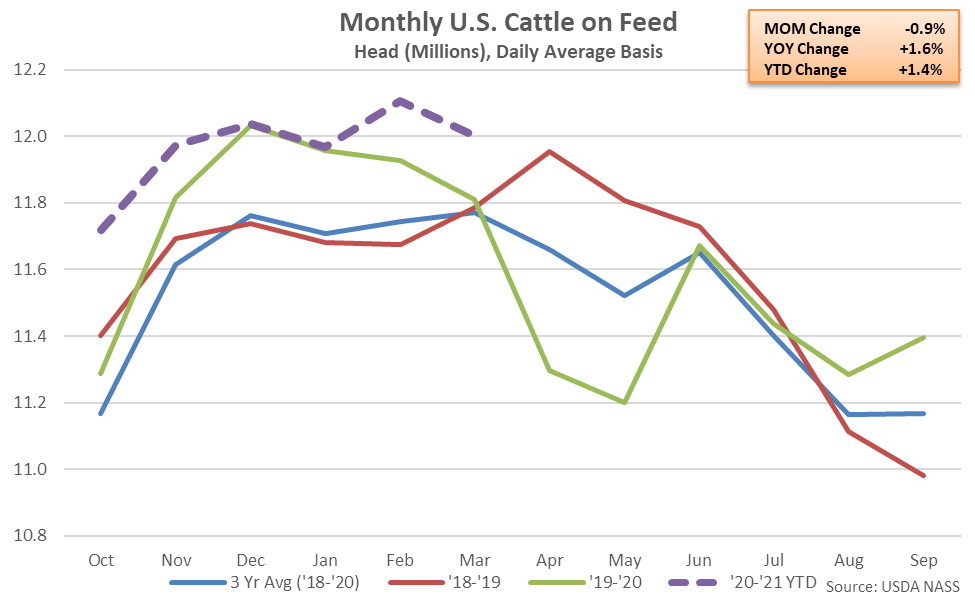
Placements in feedlots finished higher on a YOY basis for the third consecutive month throughout Feb ’21 when accounting for the previous year’s leap year, increasing by 1.9%. The 1.9% YOY increase in placements finished above average analyst expectations of a 1.1% increase when adjusting for the previous year’s leap year. YOY increases in placements were led by those weighing 700-799 pounds (+3.6%), followed by placements weighing 800 pounds or more (+3.2%) and placements weighing less than 600 pounds (+2.0%). Placements weighing 600-699 pounds (-4.5%) declined throughout the month.
Total placements in feedlots declined 0.9% on a YOY basis throughout the ’19-’20 production season, reaching a four year low level. ’20-’21 YTD placements have declined by an additional 3.4% on a YOY basis throughout the first five months of the production season, despite the most recent increase.
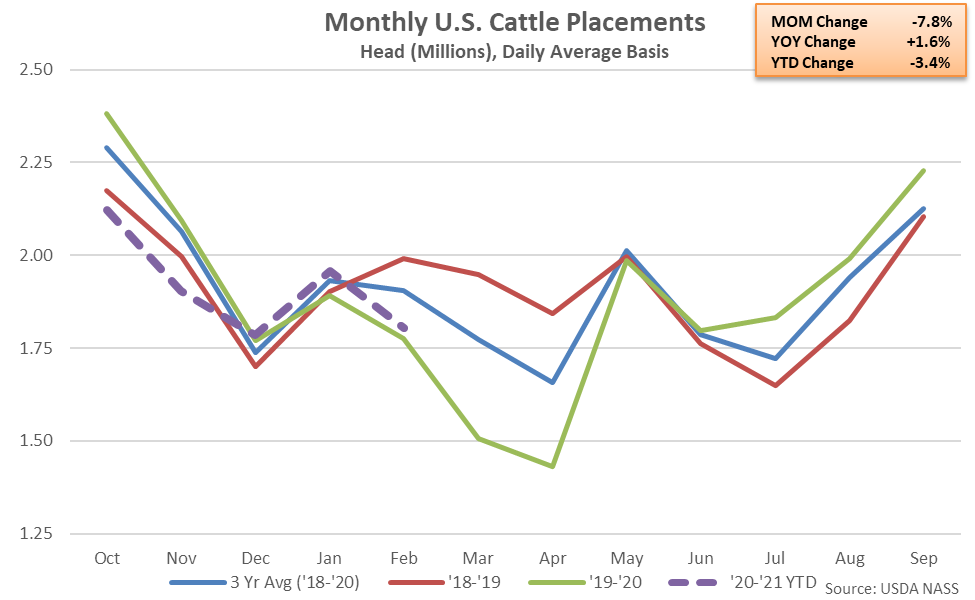
Cattle placements weighing under 700 pounds declined 1.1% on a YOY basis during Feb ’21, reaching a five year low seasonal level. The YOY decline in cattle placements weighing under 700 pounds was the fourth experienced throughout the past five months. Cattle placements weighing under 700 pounds finished 0.2% above previous year levels throughout the ’19-’20 production season however ’20-’21 YTD placements weighing under 700 pounds have declined by 5.2% on a YOY basis throughout the first five months of the production season.
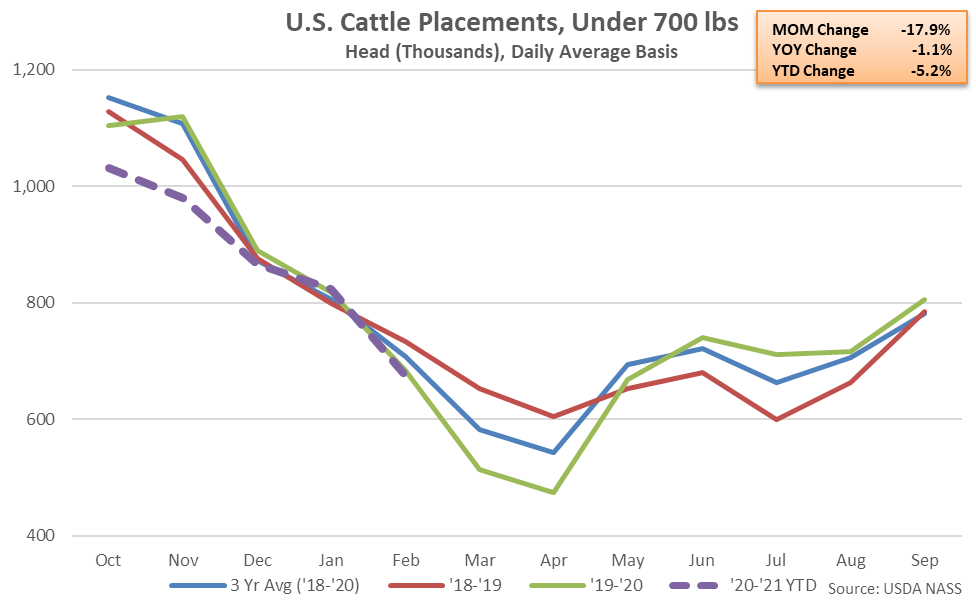
Cattle placements weighing 700 pounds or more increased 3.4% on a YOY basis during Feb ’21, finishing higher on a YOY basis for the third consecutive month. Cattle placements weighing 700 pounds or more declined 1.7% on a YOY basis throughout the ’19-’20 production season while ’20-’21 YTD placements weighing 700 pounds or more have declined by an additional 1.9% on a YOY basis throughout the first five months of the production season, despite the most recent increase.
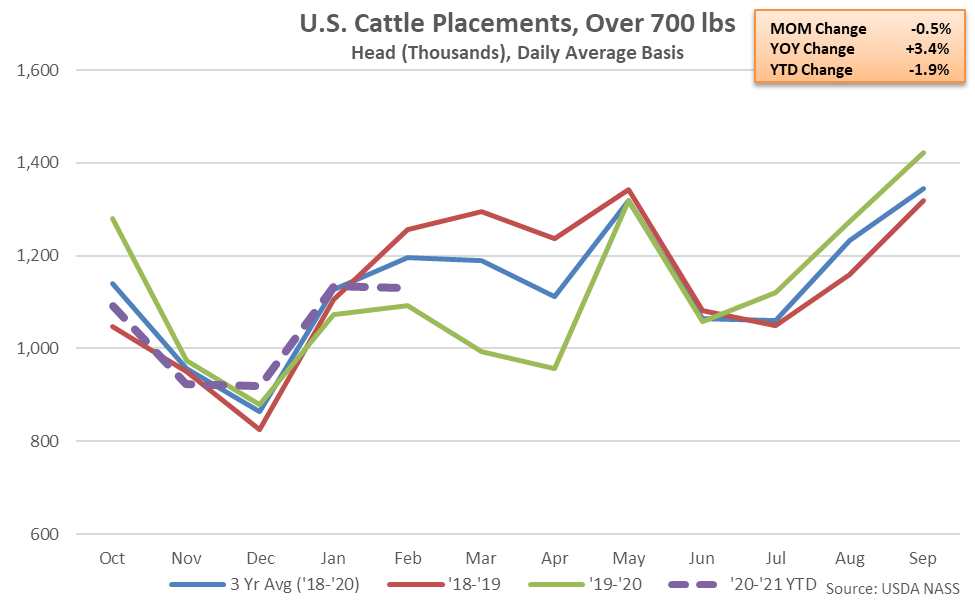
Marketings of fed cattle increased 1.1% on a YOY basis throughout Feb ’21 when accounting for the previous year’s leap year, reaching a ten year high seasonal level. The 1.1% YOY increase in marketings finished below average analyst expectations of a 1.6% increase when adjusting for the previous year’s leap year. Marketings of fed cattle had reached record low levels over the months of April and May as slaughterhouses slowed or closed operations due to outbreaks of COVID-19, prior to rebounding throughout the past several months of data.
’19-’20 annual marketings of fed cattle declined 2.9% on a YOY basis from the 11 year high level experienced throughout the previous production season. ’20-’21 YTD marketings have declined by an additional 1.1% on a YOY basis throughout the first five months of the production season, despite the most recent increase
